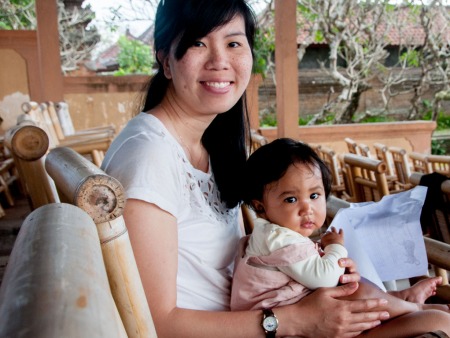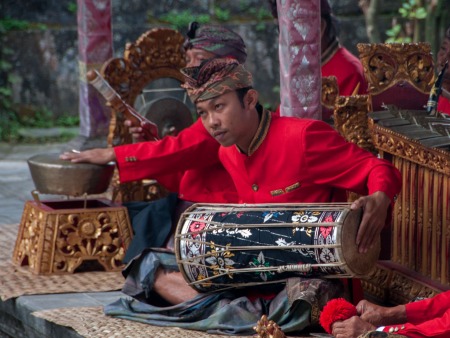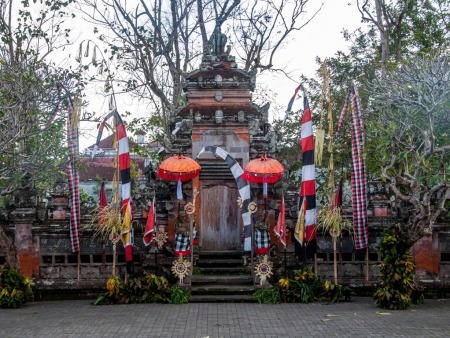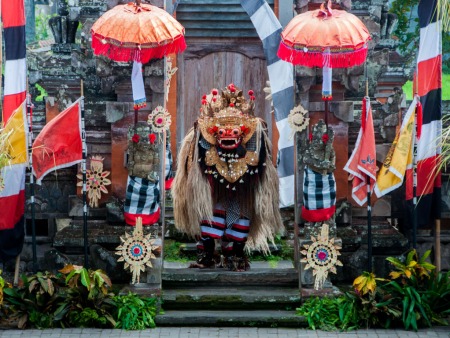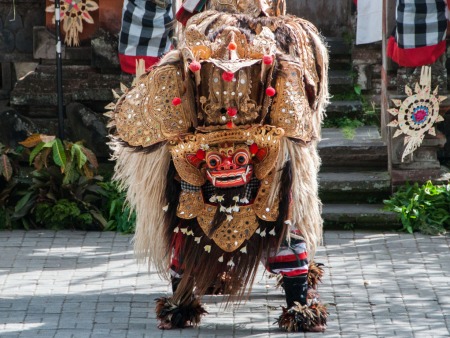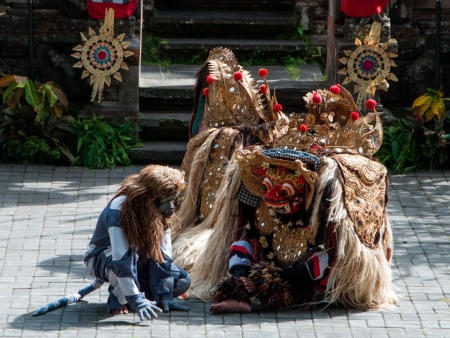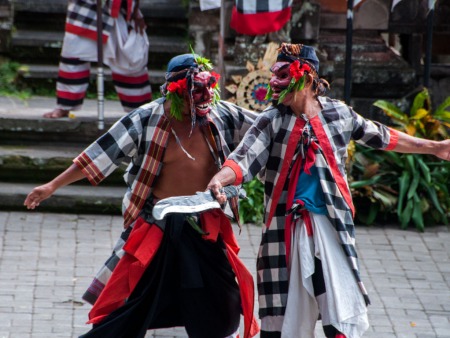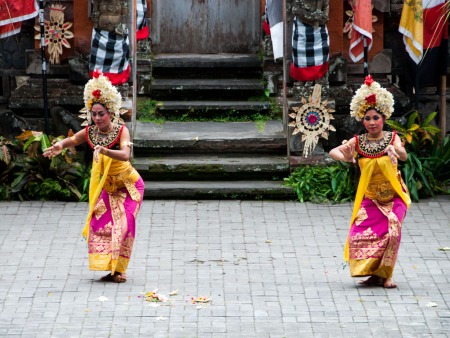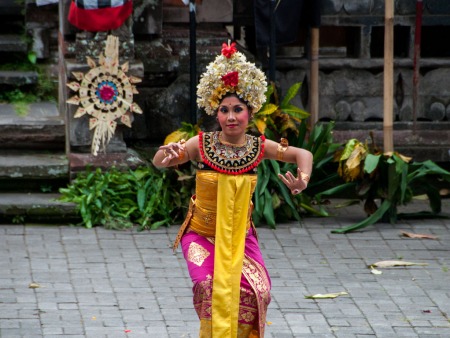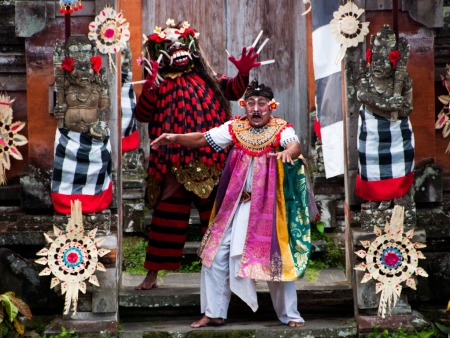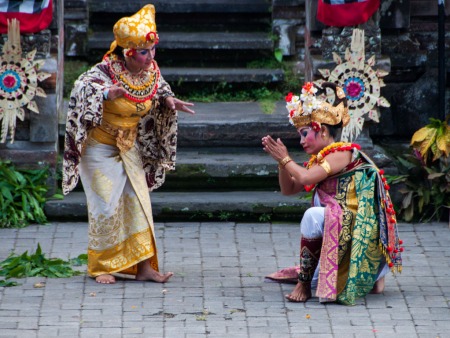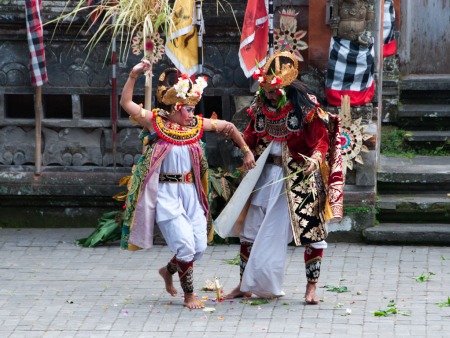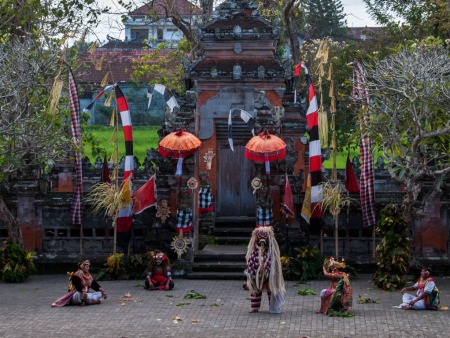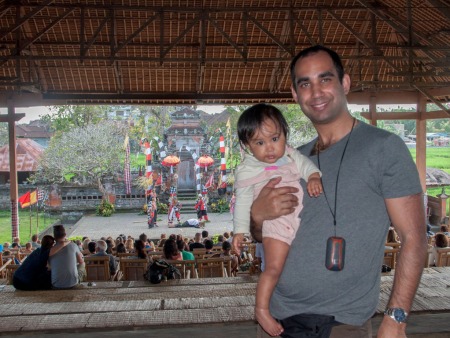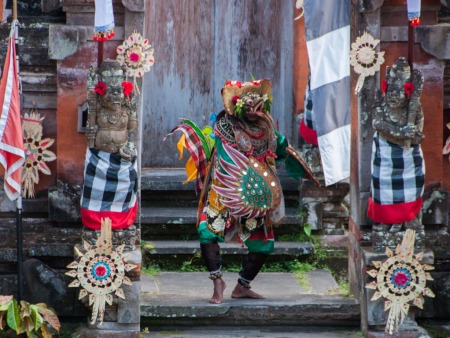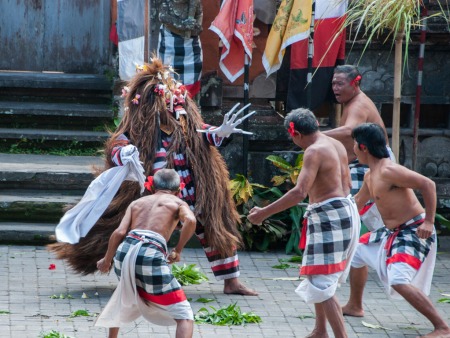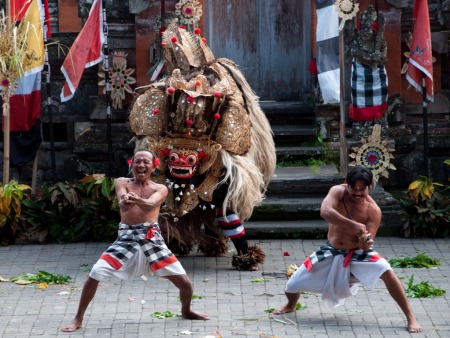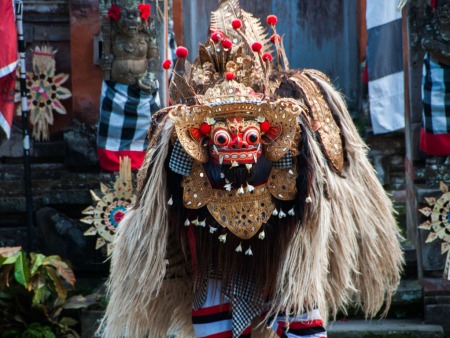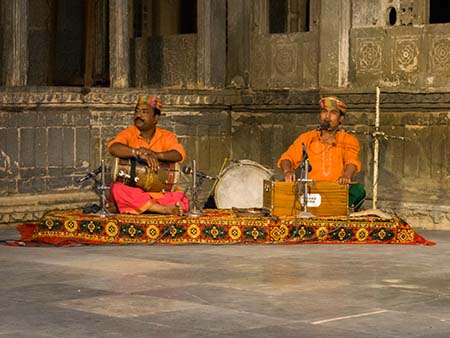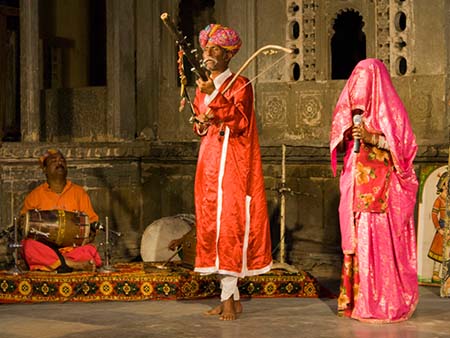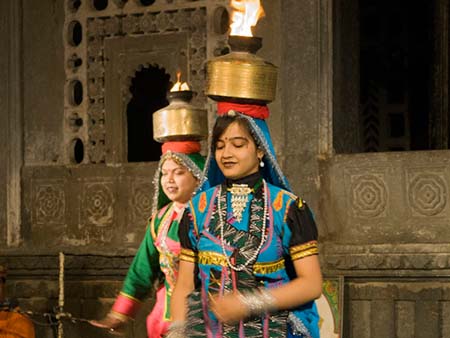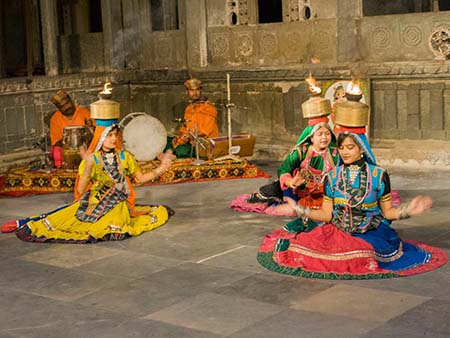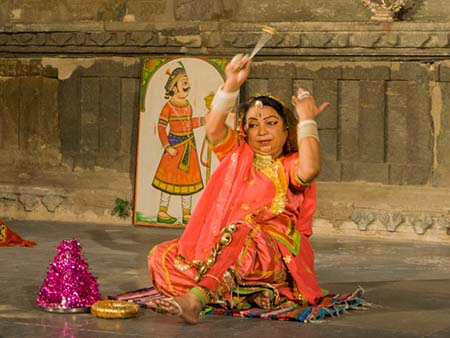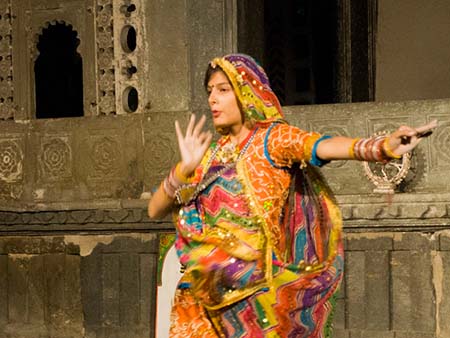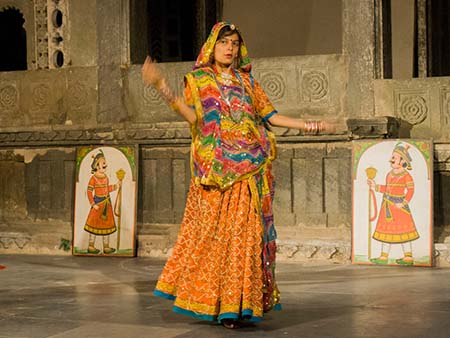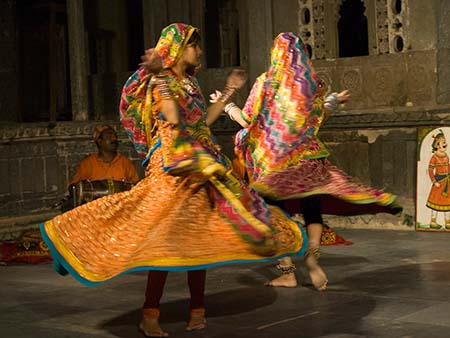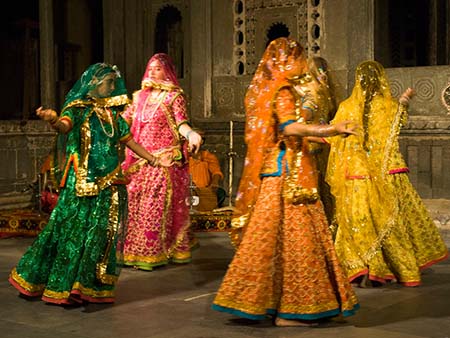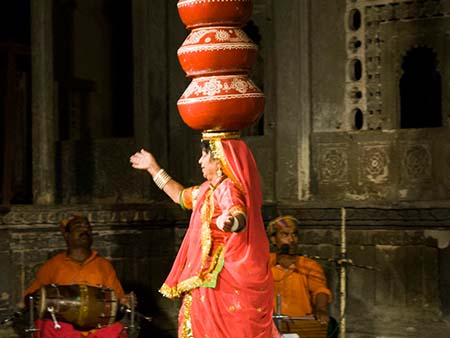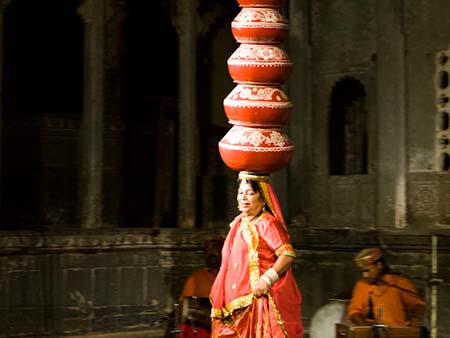One of the must-sees while in Bali is a traditional Balinese dance, our guide brought us to one of the more popular dances held at Pura Puseh in the city of Batuan, ten kilometers south of Ubud. The dance is known as the Barong and kris dance, the Barong lion-like mythical Balinese creature, and the kris (or keris) is a traditional dagger with a wavy blade.
The Barong and kris dance
The Barong play represents an eternal fight between good and evil. Barong (a mythological animal) represents the good spirit and Rangda (a mythological monster) represents an evil one.
The dance starts with a music overtone
Followed by his friend the monkey, the tiger comes out. Three masked dancers appear, representing men making palm wine in the forest, whose child is killed by the Barong. The three men get angry and attack the Barong which is helped by the monkey. During the fight, the nose of one of the three men is bitten off.
First act
Two girl dancers appear, representing the servants of the Rangda, looking for the servants of Dewi Kunti who are on the way to meet their Patih (Prime Minister).
Second act
The servants of Dewi Kunti come. One of the servants of the Rangda changes into a witch. The witch enters and makes both servants angry. They meet their Patih and go together to Dewi Kunti.
Third act
Dewi Kunti and her son, Sadewa come up. Dewi Kunti has promised the Rangda to sacrifice Sadewa. A witch appears and enters Dewi Kunti. She becomes angry and orders the Patih to bring Sadewa into the forest. The Patih also enters and does not have pity on Sadewa. Sadewa is then taken to into a forest and tied to a tree.
Fourth act
Unknown by Rangda, Siwa God appears and gives Sadewa immortality. The Rangda appears, ready to kill Sadewa, and eat him up but Sadewa is still alive. She then surrenders and asks him to redeem herself. Sadewa agrees and kills the Rangda. The Rangda goes into Heaven.
Fifth act
One of the servants of the Rangda called Kalika comes up before Sadewa and asks him to redeem herself, too. Sadewa refuses. Kalika gets angry and changes herself into a boar and fights Sadewa. The boar can be defeated. She then changes herself into a bird but is defeated again. At last she changes herself into Rangda and Sadewa cannot kill her. In such circumstances, Sadewa decides to then change himself into a Barong. Still the Rangda seems to be too powerful and the fight is ended. Followers of the Barong appear and help him fight the Rangda.




































































































